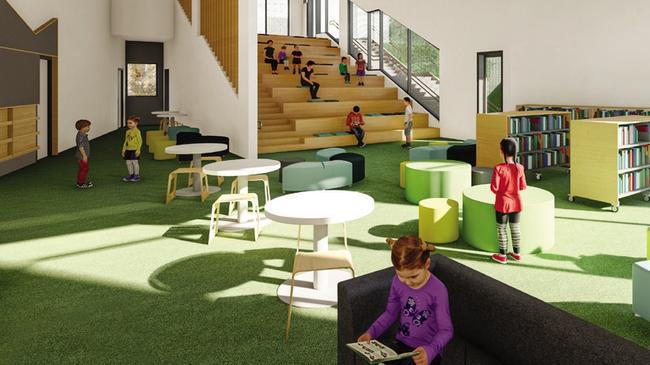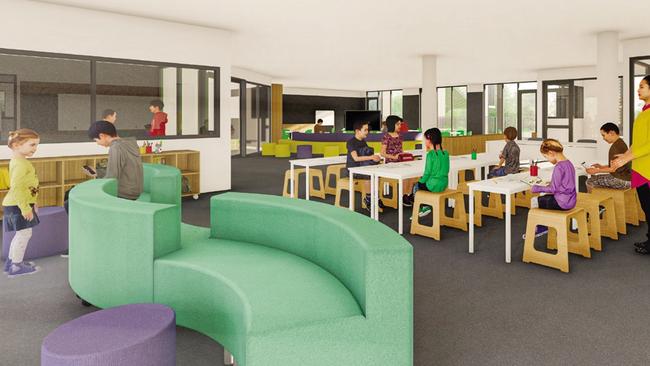A new report has criticised a trend towards open plan classrooms
A Department of Education report has cited research saying there is no empirical evidence to show open plan classrooms work.
Education
Don't miss out on the headlines from Education. Followed categories will be added to My News.
Flexible open-plan classrooms whereby four classes are combined so up to 120 students can mingle in one single expansive space are not supported by empirical evidence, according to a NSW Department of Education report.
It has been Department policy since 2017 to build schools with the large spaces with no distinct “front of classroom” but experts say it is time to abandon the fad and get back to normal classrooms so the teacher can be in control and students can learn.
The report on “contemporary learning spaces” released late last year cited 2018 research saying there was no data showing that innovative learning environments including open plan classrooms were better for student learning outcomes.
“Despite the current interest and systemic investment in school learning environments, there is a lack of empirical data to adequately evaluate how existing and alternative learning environments (blended, innovative learning environments and open) impact teaching and learning,” the research quoted in the report said.

It concluded that school communities should make decisions about classroom infrastructure and noted that contemporary open learning spaces encouraged a departure from traditional teacher-led instruction to more learner-centred and diverse forms of instruction.
At Denham Court Public School in Sydney’s west teachers could not separate classes to reduce the risk of children contracting Covid. Why? Because there were no interior walls in line with the Department’s “approach to fully flexible open plan teaching and learning environments”.
Open-plan classrooms rose to prominence first in the 1970s in a bid to foster group work among students and promote the concept of the teacher as a facilitator of learning but were abandoned soon afterwards.
Then Education Minister Rob Stokes announced their revival in 2017.
University of NSW Emeritus Professor John Sweller said now that the NSW Kindergarten to Year 2 curriculum released two weeks ago had truly gone back to focusing on proven explicit, teacher-led instruction, it was now time to end the open plan learning experiment.
“Completely open classrooms just have kids socialising with each other all the time instead of actually learning anything. It is not a good idea,” he said.
“It is an ideology — people decided inquiry based learning was a terrific way of going — they didn‘t provide any theoretical reason why — it contradicts everything we know about human cognition: how we learn, how we think, how we solve problems, there is no data supporting it.”

Chair of the NSW Parliament upper house Committee on Education Mark Latham said billions had been spent building schools with open plan classrooms but there was little evidence for them.
“A Macquarie University study, and I think commonsense, says that with multiple classes and teachers in the one open space, many students find it hard to concentrate on their teacher and those at the back of the class find it hard to hear what’s being said,” he said.
“In 2019 I looked at the NAPLAN results of rebuilt open plan schools and they all went backwards. They are a fashion that’s emerged to facilitate ‘joint teaching’, ‘group learning’ and ‘self-starting students’.”
A Department of Education spokeswoman said the report was published late last year.
“(It) is a review that thematically explores some literature relating to contemporary learning spaces. It is not an instruction to teachers,” she said.




